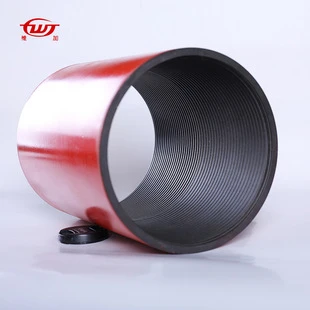- Afrikaans
- Albanian
- Amharic
- Arabic
- Armenian
- Azerbaijani
- Basque
- Belarusian
- Bengali
- Bosnian
- Bulgarian
- Catalan
- Cebuano
- Corsican
- Croatian
- Czech
- Danish
- Dutch
- English
- Esperanto
- Estonian
- Finnish
- French
- Frisian
- Galician
- Georgian
- German
- Greek
- Gujarati
- Haitian Creole
- hausa
- hawaiian
- Hebrew
- Hindi
- Miao
- Hungarian
- Icelandic
- igbo
- Indonesian
- irish
- Italian
- Japanese
- Javanese
- Kannada
- kazakh
- Khmer
- Rwandese
- Korean
- Kurdish
- Kyrgyz
- Lao
- Latin
- Latvian
- Lithuanian
- Luxembourgish
- Macedonian
- Malgashi
- Malay
- Malayalam
- Maltese
- Maori
- Marathi
- Mongolian
- Myanmar
- Nepali
- Norwegian
- Norwegian
- Occitan
- Pashto
- Persian
- Polish
- Portuguese
- Punjabi
- Romanian
- Russian
- Samoan
- Scottish Gaelic
- Serbian
- Sesotho
- Shona
- Sindhi
- Sinhala
- Slovak
- Slovenian
- Somali
- Spanish
- Sundanese
- Swahili
- Swedish
- Tagalog
- Tajik
- Tamil
- Tatar
- Telugu
- Thai
- Turkish
- Turkmen
- Ukrainian
- Urdu
- Uighur
- Uzbek
- Vietnamese
- Welsh
- Bantu
- Yiddish
- Yoruba
- Zulu
Exploring the Importance of Casing Collars in Drilling Operations and Well Integrity
Understanding Casing Collars in Oil and Gas Operations
In the oil and gas industry, the importance of proper well construction cannot be overstated. Among the various components of a well, casing collars play a vital role in maintaining the integrity and efficiency of drilling operations. This article delves into the significance, types, functions, and installation processes of casing collars, ensuring an understanding of their critical role in oil and gas extraction.
What are Casing Collars?
Casing collars are specialized fittings that are used in the casing strings of oil and gas wells. They are typically made of steel and are designed to connect individual lengths of casing pipe. The primary function of these collars is to provide structural support and to ensure that the casing remains intact under various pressure conditions. They are often equipped with features that allow for the use of other drilling equipment, such as packers and centralizers, further enhancing their utility.
Importance of Casing Collars
The significance of casing collars in well construction is multifaceted. First and foremost, they help maintain the well's structural integrity. Given the extreme conditions encountered during drilling, such as high temperatures and pressures, casing collars are essential in preventing the collapse of the casing string. They provide robust connection points that can withstand these challenging environments.
Moreover, casing collars serve as anchoring points for various additional tools employed in the drilling process. For instance, they can secure packers used for zonal isolation, which prevents the migration of fluids between different geological formations. This isolation is crucial for both the efficiency and safety of the extraction process.
Types of Casing Collars
There are various types of casing collars designed for different applications. Common types include
1. Standard Collars These are the most basic type of casing collar, used for general applications in well construction.
2. Bumper Collars Designed to cushion the impact when the casing string is lowered into the well, these collars help prevent damage to the casing and other equipment.
casing collar

3. Centralizer Collars These collars facilitate the centralization of the casing within the wellbore, ensuring that it is positioned correctly for optimal operation.
4. Threaded Collars Specific collars are designed with threaded connections, allowing for easy assembly and disassembly during the well construction process.
Installation Process of Casing Collars
The installation of casing collars is a crucial step in the well construction process. It typically involves several steps
1. Preparation Prior to installation, the casing pipe and collars are thoroughly inspected for any defects that could compromise their integrity.
2. Connection The collars are screwed or welded onto the casing pipe sections. In cases where threaded collars are used, the threads are lubricated to facilitate a secure connection.
3. Alignment Maintaining proper alignment is crucial to ensure that the casing string descends smoothly into the wellbore. Misalignment can lead to complications during drilling and may impact well performance.
4. Testing Once installed, the casing and collars undergo pressure testing to confirm that they can withstand the expected conditions without failure.
Conclusion
Casing collars are indispensable components in oil and gas extraction processes. Their ability to connect casing sections while providing structural support is crucial for maintaining the integrity of wells in challenging environments. As drilling technologies continue to advance, the design and functionality of casing collars will also evolve, further enhancing their role in successful hydrocarbon recovery. Understanding the intricacies of casing collars is essential for professionals in the field, as it underpins the overall efficacy and safety of drilling operations. This knowledge not only promotes successful extraction but also contributes to the sustainable and responsible management of our natural resources.
-
Tubing Pup Joints: Essential Components for Oil and Gas OperationsNewsJul.10,2025
-
Pup Joints: Essential Components for Reliable Drilling OperationsNewsJul.10,2025
-
Pipe Couplings: Connecting Your World EfficientlyNewsJul.10,2025
-
Mastering Oilfield Operations with Quality Tubing and CasingNewsJul.10,2025
-
High-Quality Casing Couplings for Every NeedNewsJul.10,2025
-
Boost Your Drilling Efficiency with Premium Crossover Tools & Seating NipplesNewsJul.10,2025







